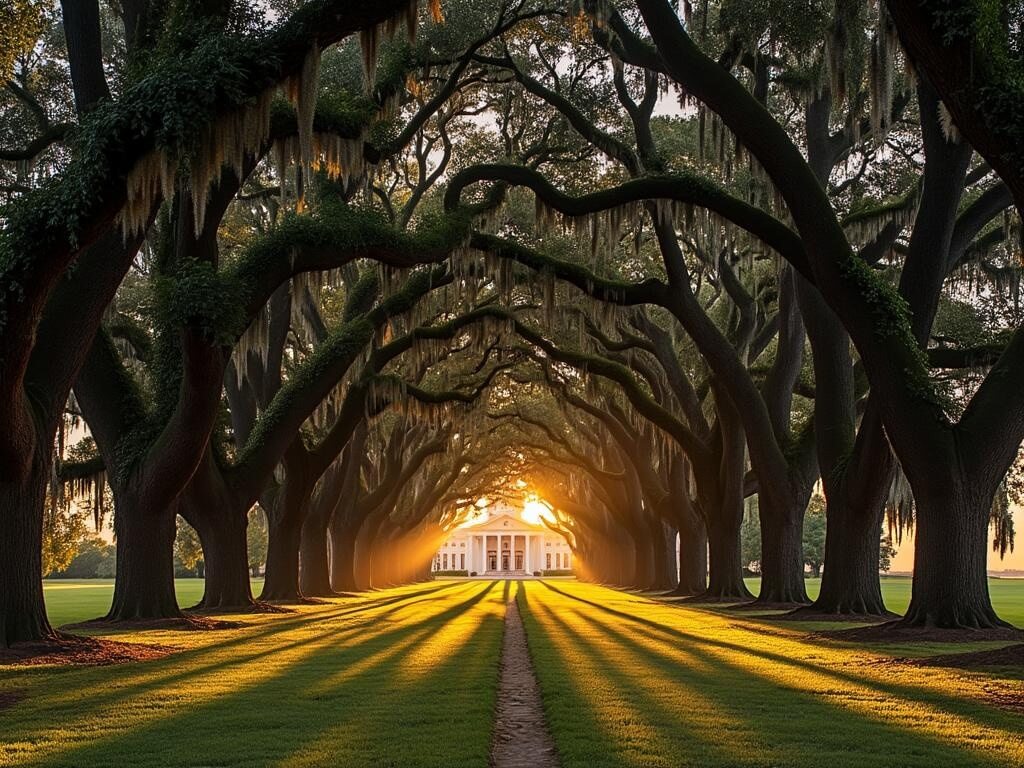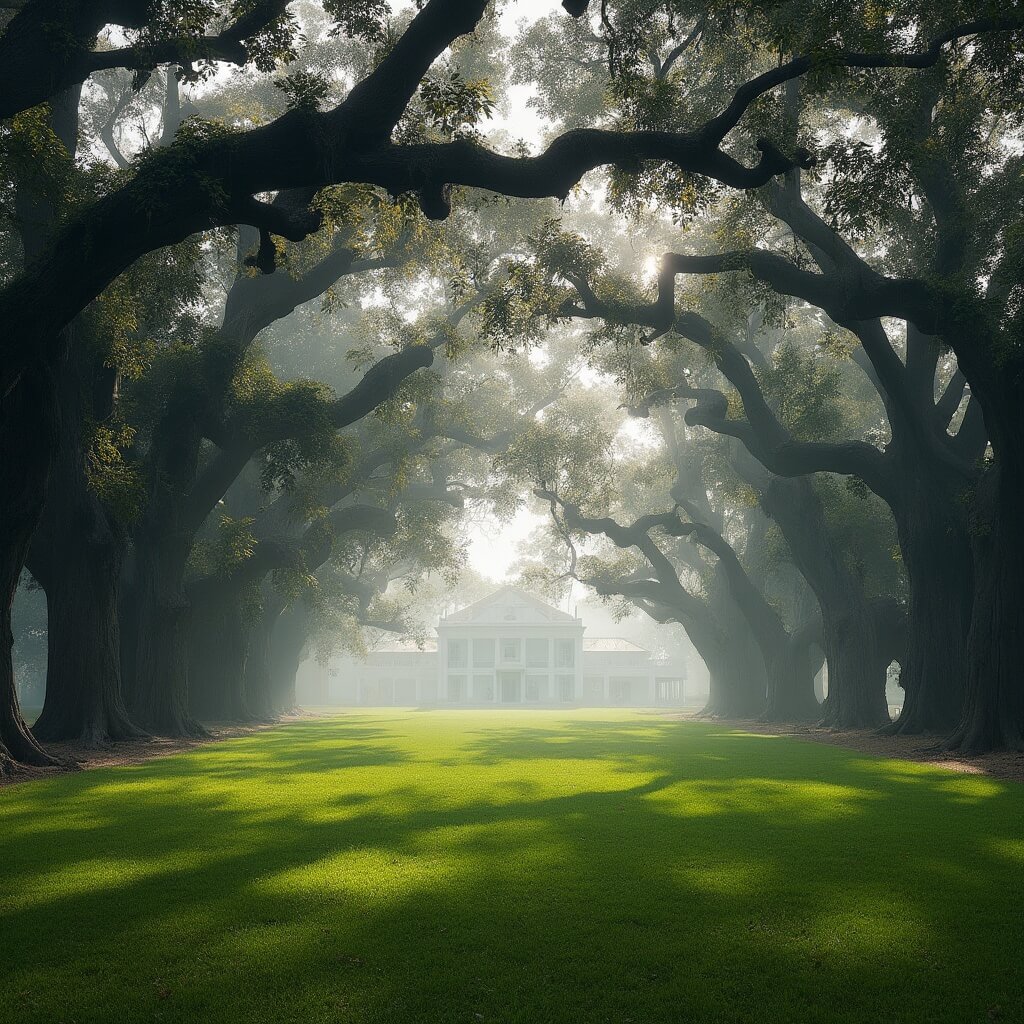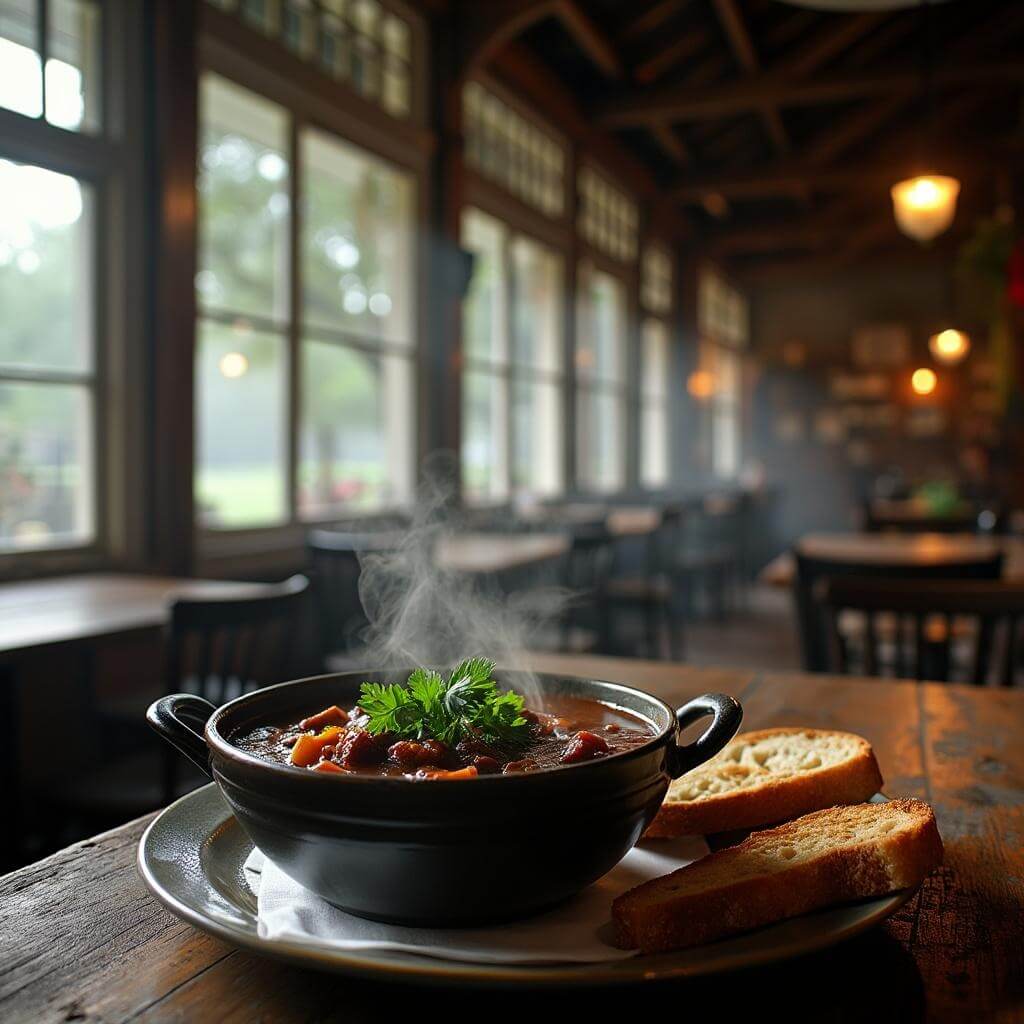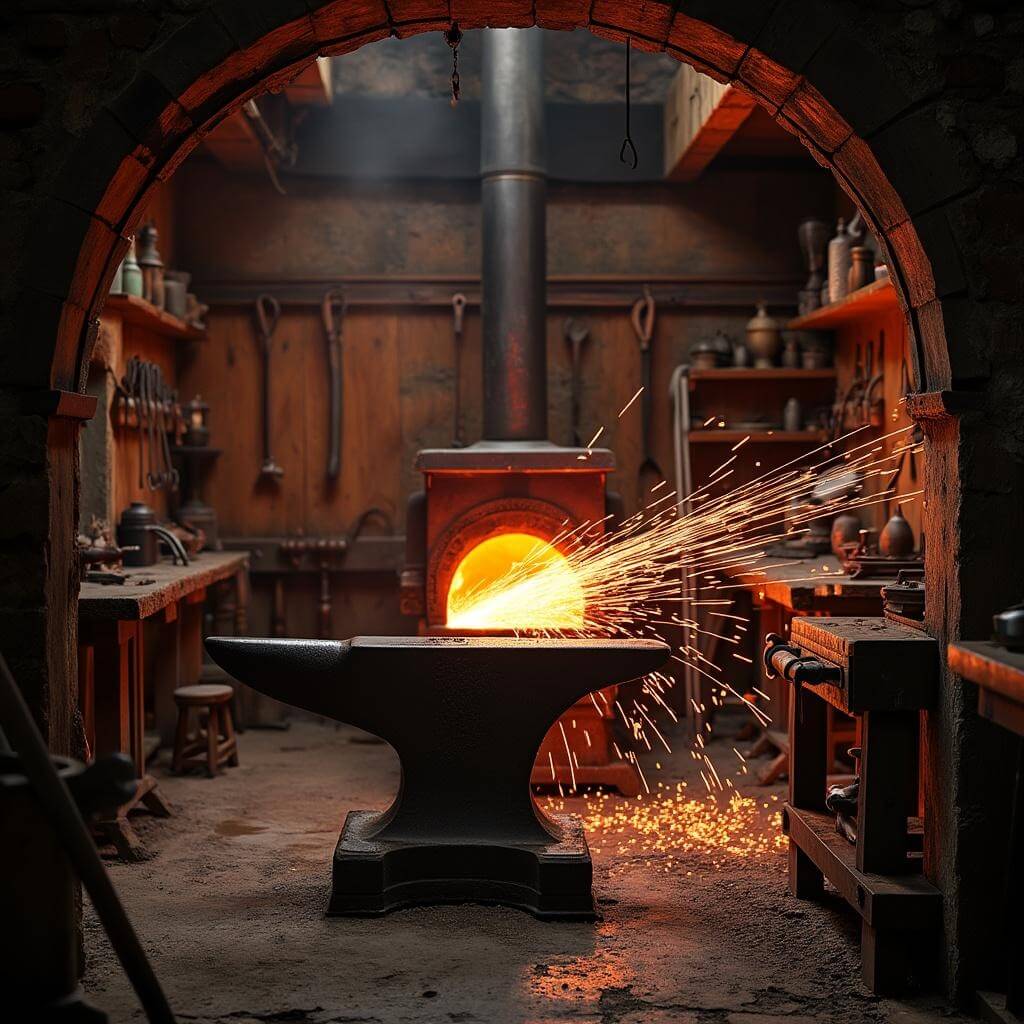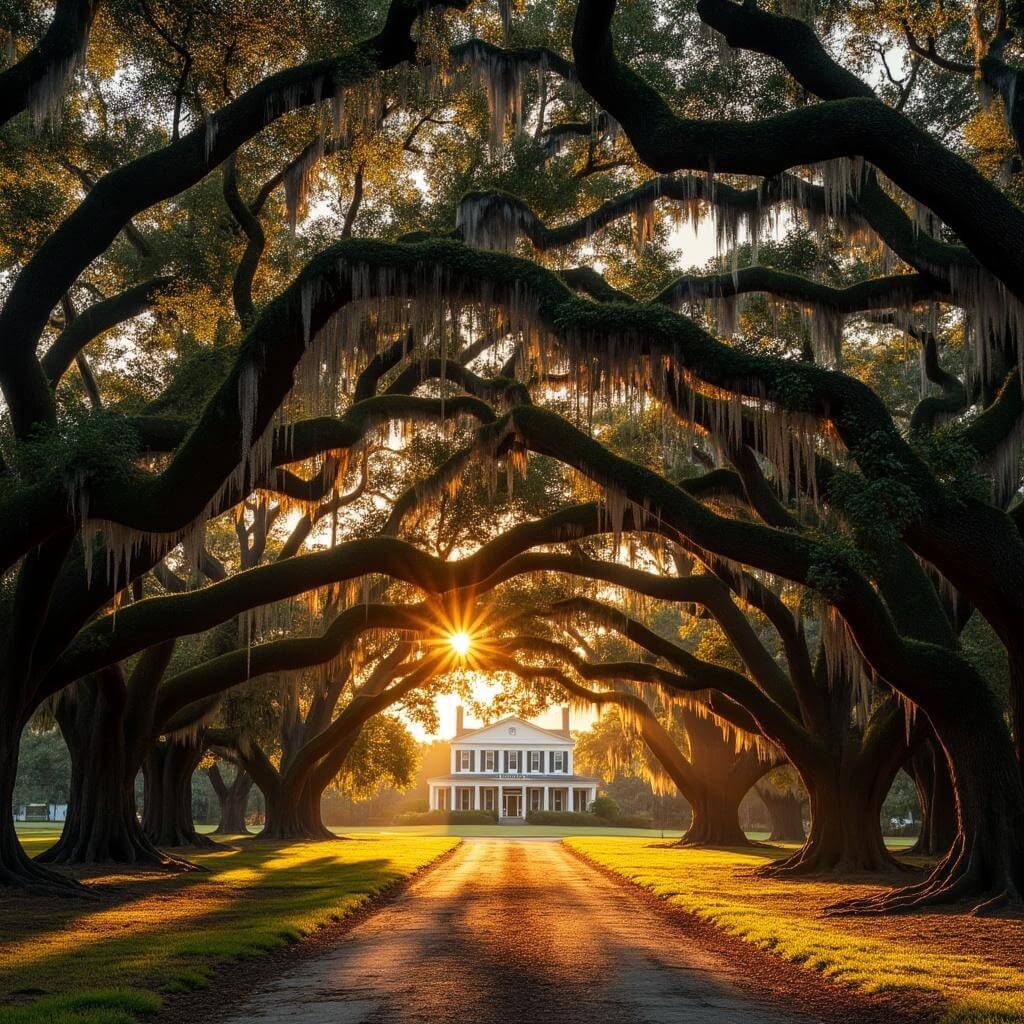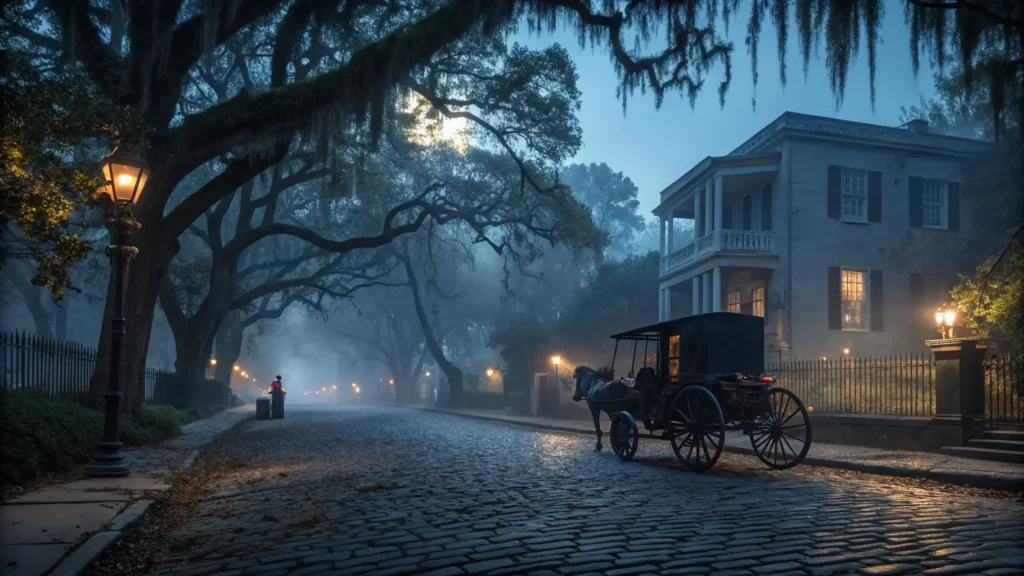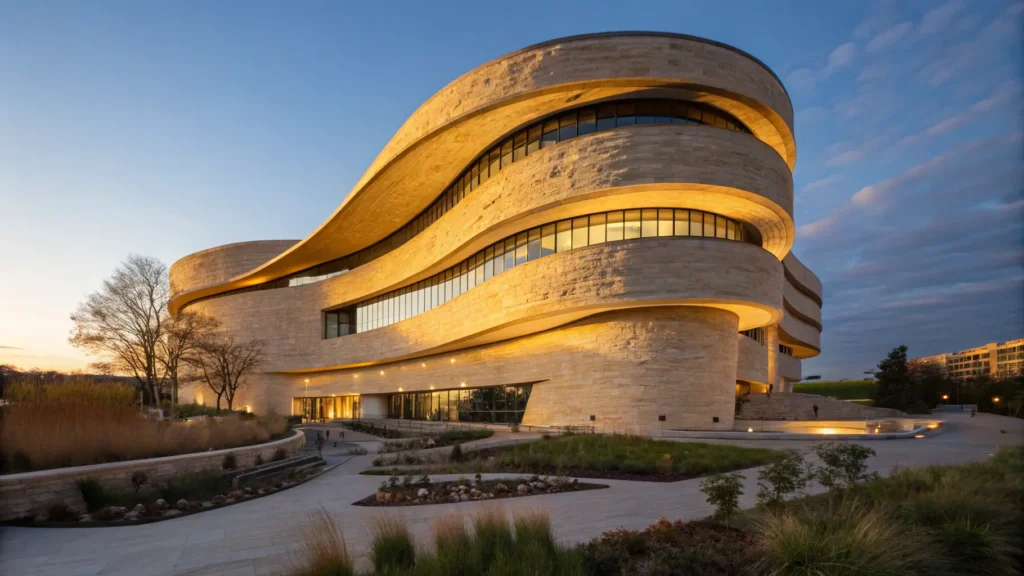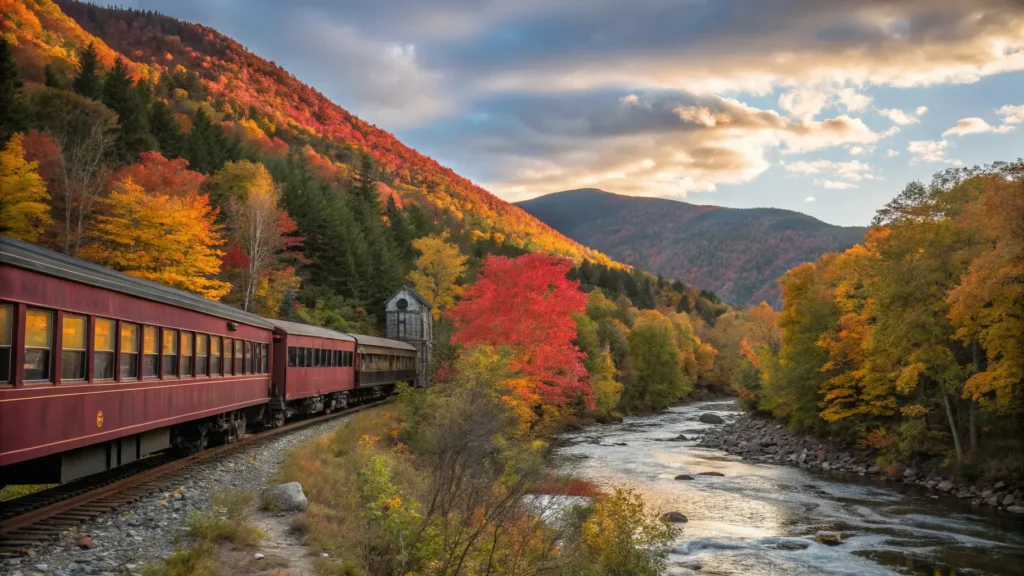Every Southern road trip needs that one jaw-dropping moment. Mine happened precisely where 28 ancient live oak trees create a breathtaking corridor leading to the most photogenic mansion in Louisiana.
Oak Alley Plantation isn’t just another historic site. It’s a living narrative carved into Louisiana’s landscape, sitting regally along the Mississippi River’s west bank in Vacherie.
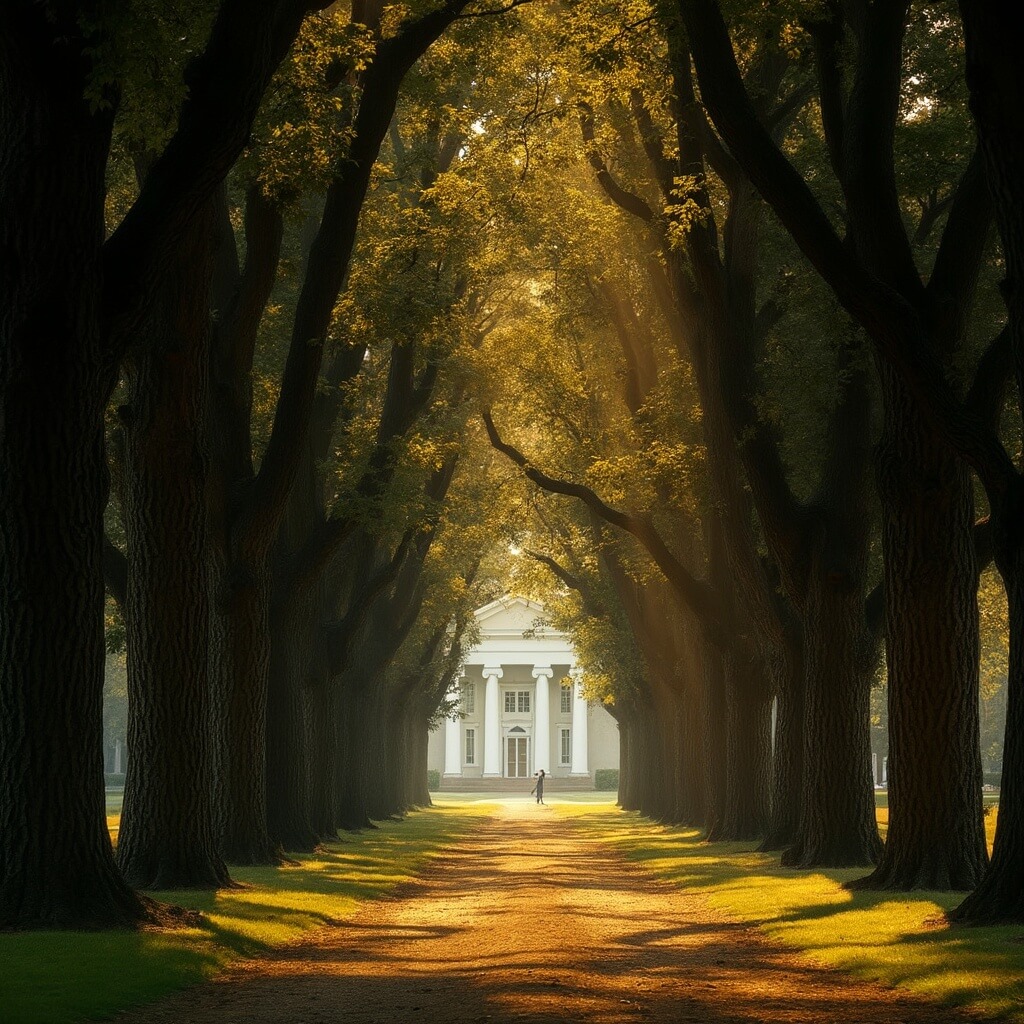
The Legendary Landscape That Stops Traffic
Imagine walking between two perfectly aligned rows of 300-year-old live oak trees. These massive sentinels, each stretching 800 feet long, form a natural cathedral that’s been photographed millions of times – and for good reason.
My first visit felt surreal. The trees, some measuring over 7 feet in diameter, create an architectural marvel that predates the famous Greek Revival mansion behind them. They’re not just trees – they’re historical witnesses.
A Sugar Empire Built on Complicated Foundations
The plantation’s story begins in the late 18th century as a Spanish land grant. Valcour Aime, dubbed the “Sugar King of Louisiana,” transformed this land into a sugar production powerhouse during the antebellum era.
Key historical highlights include:
- Constructed between 1836-1839
- Owned by the prestigious Roman family
- Restored in 1925 by Andrew and Josephine Stewart
- Became a nonprofit foundation in 1972
What Makes Oak Alley Special?
Three things set this plantation apart from others:
- Architectural perfection of the Greek Revival mansion
- Honest, nuanced interpretation of slavery’s painful history
- Incredibly preserved landscape that feels frozen in time
Tours That Tell Complex Stories
Visitors can choose between:
- Guided “Big House” mansion tours (30-35 minutes)
- Self-guided walking tours of grounds and exhibits
- Combination tours with nearby plantations
The “Slavery at Oak Alley” exhibit stands out. Unlike many plantation tours that romanticize the past, this experience provides a frank, respectful examination of enslaved people’s lives through personal narratives and reconstructed slave cabins.
Practical Visitor Pro Tips
Before you go, remember:
- Wear comfortable walking shoes
- Bring a camera (those oak trees, seriously!)
- Plan 2-3 hours for a comprehensive visit
- Book tickets in advance during peak seasons
The plantation sits in a sweet spot between educational depth and visual splendor. It’s not just a tour – it’s a profound journey through layers of Southern history, architecture, and human experience.
As the afternoon light filtered through those massive oak branches, casting long shadows across manicured grounds, I realized Oak Alley is more than a destination. It’s a portal into understanding the complex tapestry of American history.
The stories embedded in these walls and trees continue to unfold, inviting each visitor to listen, learn, and reflect on the intricate narratives that shaped this remarkable place.
Explore More of the South:
Dining and Culinary Experiences: More Than Just History
Ever wondered what Southern hospitality tastes like? Oak Alley’s on-site restaurant transforms your historical journey into a culinary adventure.
The restaurant sits strategically near the mansion, offering visitors a chance to savor traditional Creole and Cajun dishes that echo the plantation’s rich cultural heritage. My recommendation? Try the gumbo – it’s like eating a piece of Louisiana history.
Menu highlights include:
- Authentic Creole seafood dishes
- Traditional Southern comfort foods
- Local Louisiana specialties
- Seasonal ingredient-driven menu
Want to try your hand at Southern cooking? Explore recipes like Classic Southern Pecan Pie or Southern-Style Potato Salad.
Beyond the Guided Tour: Hidden Gems Most Visitors Miss
While most tourists follow standard routes, seasoned travelers know the real magic lies in the details.
The blacksmith shop, often overlooked, offers fascinating demonstrations of historical craft techniques. Watching skilled artisans recreate 19th-century metalworking techniques provides an immersive glimpse into daily plantation life.
Pro traveler tip: Ask the blacksmith guide about tool-making techniques. Their stories are often more fascinating than any scripted tour narrative.
Understanding Slavery’s Complex Narrative
Oak Alley doesn’t shy away from difficult conversations. The “Slavery at Oak Alley” exhibit represents a profound commitment to honest historical interpretation.
Walking through reconstructed slave cabins, visitors confront uncomfortable truths about America’s complex racial history. Each artifact, each personal narrative, challenges romanticized plantation mythology.
Key exhibit features:
- Personal stories from enslaved individuals
- Authentic artifacts documenting daily life
- Contextual information about labor systems
- Interactive elements encouraging reflection
To dive deeper into the plantation’s evolving mission, Experience the Historic Oak Alley Plantation Tours in New Orleans.
Photography and Media: A Visual Storyteller’s Paradise
Photographers and social media enthusiasts, take note: Oak Alley isn’t just a location. It’s a visual masterpiece.
Those iconic oak trees create natural frames that have attracted filmmakers, photographers, and artists for decades. Whether you’re a professional or an amateur with a smartphone, every angle offers a stunning composition.
Camera recommendations:
- Wide-angle lens for tree-lined avenue shots
- Golden hour lighting (sunset/sunrise) for magical tones
- Tripod for architectural details
- Patience to capture subtle light variations
For another stunning view into the past, Discover the Majestic Oak Alley: A Journey Through Antebellum History.
Seasonal Considerations and Best Visit Times
Louisiana’s climate dramatically impacts the plantation experience. Spring and fall offer the most comfortable touring conditions.
Summer brings intense heat and humidity, so:
- Bring plenty of water
- Wear lightweight, breathable clothing
- Plan morning or late afternoon tours
- Consider indoor exhibits during peak heat
Accessibility and Inclusivity
Oak Alley demonstrates increasing commitment to making history accessible to all visitors.
While some areas require walking, staff provide accommodations for visitors with mobility challenges. Benches strategically placed throughout the grounds allow periodic rest.
Enjoy more Southern hospitality at home with recipes like Homestyle Amish Chicken and Noodles and Paula Deen’s Chicken and Dumplings.
The Future of Plantation Tourism
As cultural understanding evolves, so do plantation museums. Oak Alley represents a forward-thinking model of historical interpretation – balancing preservation, education, and honest storytelling.
Emerging trends include:
- Digital archive expansions
- Augmented reality experiences
- More comprehensive enslaved community narratives
- Sustainability-focused preservation efforts
Final Reflections: Why Oak Alley Matters
More than a beautiful location, Oak Alley serves as a powerful educational platform. It invites visitors to engage critically with complex historical narratives, challenging simplistic interpretations of Southern history.
Each visit becomes a personal journey of discovery, understanding, and reflection.
Your Oak Alley Plantation experience awaits – where majestic oaks continue whispering secrets of the Deep South.
Wrap up your cultural exploration with a taste of local comfort food like Paula Deen’s Pimento Cheese.

